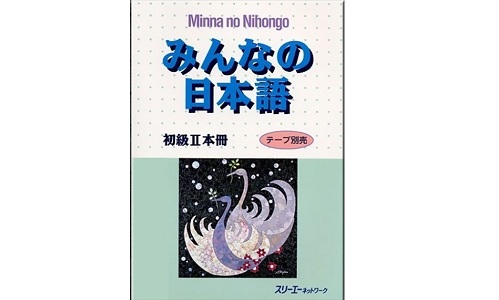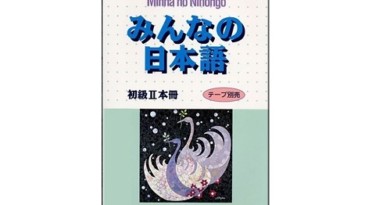Learn minna no nihongo lesson 7
Learn minna no nihongo lesson 7. hi everyone. In this post, Learn Japanese Daily will introduce you the very first lessons in the Japanese course-book : Minna no nihongo (Japanese for everyone)
Learn minna no nihongo lesson 7:
Summary :
The topic of lesson 7 is about Family
The vocabulary will obviously be about Family. Besides that learners will also learn about some transitive verbs and some structures based around these verbs.
First, about verbs:
きります: Cut
おくります: Send
あげます: Give, gift
かします: Lend and opposite of it is かります
おしえます: Teach
ならいます: Learn
かけます: call
でんわをかけます: make a call
The second group is eating tools:
て: Hand
はし: Chopsticks
スプーン: Spoon
ナイフ: Knife
はさみ: Scissor
The third group is office facilities and others:
ファクス: Fax
ワープロ: Typewriter
パソコン: personal computer
パンチ: Punching machine
ホッチキス: Stapler
セロテープ: Tape
消しゴム: Eraser
紙: Paper
花: Flower
シャツ: Shirt
プレゼント: Present
荷物 : Baggage, luggage
お金: Money
切符: Ticket
クリスマス: Christmast
Fourth groups is family:
ちち: Dad
はは: Mom
When speaking about other people’s dad or addressing yourself when speaking with own’s dad, Japanese has the word お父さんthe same also applies to addressing yourself when talking to mom or when talking about other people’s mom, we have the word: お母さん
Some other words:
もうalready
まだnot yet
これからFrom now on
すてきですねnice, pretty
Next, move on to the structures.
The first structure is about “Doing something with something” Nouns indicating method でverb. The particle でindicates the method. Let’s take an example:
Everyday, we eat with chopsticks. So, the action here is “eat”, and is done by using the method “chopsticks” はしでご飯を食べます “I eat with chopsticks”. Another example: “I write report in Japanese”
The action here is writing report, and our method is using Japanese.
日本語でレポートを書きます. The particle で in this structure is very much like “by” in English.
Let’s do a little practicing so you can understand more clearly. Translate these to Japanese:
I write letter using the typewriter.
I learn Japanese with radio.
So learners just learning Japanese and there must be a lot of words and sentences learners don’t know its meaning. The new structure is to ask about the meaning of some words or even sentences. The structure is:
Words/sentencesは~語で何ですか
For example: 「ありがとう」は英語で何ですか means “What is “Thank you” in English?”
The next structure is related to the new words that I mentioned earlier.
So, what does these verbs means あげます、かします、おしえます ?
They are all transitive verbs that need objects to complete the meaning and their meanings are give/lend/teach someone.
We put the practical にafter nouns indicating objects and then the verb
For example:, 山田さんは木村さんに花をあげました. Means “Mr.Yamada gave flower to Mrs. Kimura.”
Mrs. Kimura is the object of the action “Gave”, so kimuraさんmust be placed before the practical に.
リーさんに本を貸しました means “I lent Mrs. Lee a book.”
The verb 貸しましたmeans to lend someone, like the previous example, Mrs. Lee is the object of the action so her name (Leeさん) must be placed before the practical に. Next, how to say “I teach Taro English” 太郎に英語を おしえます
There is a side not for verbs like
おくります : send
電話をかけます : make a call
The object isn’t necessarily be a person but could also be a location. In that case, besideに, it can be also use the practical へlike in the sentence:
会社へ電話をかけます “I make a call to the company.”
The verb group that indicates passive actions such as:
もらいます: receive
かります: borrow
ならいます: study
Have the same structure with the previous example, the only different is that the source of the action is put before the particle に. For example: もらいます.
Someone (N1) receive (N2) something. We have the structure: N1 はN2に
木村さんは山田さんに花をもらいましたmeans “Mrs. Kimura got flowers from Mr. Yamda.”
Or 母にプレゼントをもらいます means “I got a present from my mom.”
Do you understand it?
Here’s another example: かりなさんにCDを借りました
means “I borrowed CD from Mrs. Karina.”
In this example, I am the one who got the CD and the one lending it to me is Mrs. Karina. So, “I” will be the subject and Mrs. Karina will be put before the particleに and next is the action borrowing CD. (CDを借りました )
Next, how to say: “I learn Chinese from Mr. Wang” ワンさんに中国語を習います
You can always replace the particle にwith the particle から without changing its meaning, especially when the object isn’t a person but rather a group, like a company or a school, we don’t useに but instead we use から。
For example: 銀行からお金を借りました。“I borrowed money from the bank.”
So learnres have learned the two main structure in Lesson 7. To make learners remember the lesson today more clearly, here are some exercises:
Please translate the followings into Japanese:
Tanaka give Mrs. Kimura flowers.
Kimura got flowers from Mr. Tanaka.
I send gifts to my family in Vietnam.
My father lend me a pen and I borrowed from my father a pen.
Move on to the next structure:
もう the verb ました means already done/did something, the action is already finished at the present
もう means already, used with verbs in past tense.ました。
もうごはんをたべました “I already ate.”
もうレポートを書きました “I already wrote a report.”
もう宿題をしました “I’ve already done the homework.”
When asking question, you only need to put か at the end of the question.
もうご飯を食べましたか “Have you eaten?”
もうレポートを書きました か “Have you written the report?”
もう宿題をしましたか. “Have you done the homework?”
To answer these type of questions:
For affirmative answer:「はい、もうverb ました 」
For negative answer:「いいえ、まだです」
もう にもつ を おくりましたか “Have you sent the package yet?”
If it’s yes: はい、「もう」送りました “Yes, I’ve already sent it”
If not:いいえ、まだです “No, I haven’t.”
Another thing is that when answer in negative form, we don’t use negative verbs in past tense. The reason is because the verb ませんでしたmeans someone didn’t do something in the past, NOT haven’t done it.
In the example earlier, we answer that “we haven’t sent the package” mいいえ、まだ送りません
Instead of “we did not send the package” 送りませんでした
In the conversation, Mr. Santo to visit Mr. Yamada’s house. First off, let’s start with some vocabulary in the conversation:
ごめんください means:” Excuse me, anybody home?” or “Can I come in?”
いらっしゃい “Welcome”
どうぞお上がりください “Please come in”
When the guest is invited in the house, they will say:
失礼します “Excuse me”
は)いかがですか : “Do you want something?”
いただきます: “Let’s eat/drink”
旅行 : trip/vacation,
旅行をします: travelling
お土産 : gifts/souvenirs
Next, is the dialogue, Mr. Santo stands in front of Mr. Yamada’s house and says:
ごめんください “Excuse me”
Mr Yamada answers: いらっしゃい。どうぞお上がりください “Welcome. Please come in!”
Mr. Santo comes in and says: 失礼します “I beg your pardon!”
Mr. Yamda’s wife asks: コーヒーはいかがですか “Would you like some coffee?”
Mrs. Maria answers: ありがとうございます “Thank you”
When giving the coffee, Mr. Yamada’s wife says: どうぞ “Here you go!”
Mrs. Maria says: いただきます “Let’s drink!”
And also compliments: このスプーンは素敵ですね “You have nice spoon”
Mrs. Tomoko replies: ええ。会社の人にもらいました。”Oh, my co-worker gave me that”
ヨーロッパ りょこうの おみや げです “It is a souvenir of his/her Europe trip”
The resume of the lesson 7, learneers have learnt some verbs:
send, cut , give, receive, borrow, lend
切ります、あげます、もらいます、借ります、貸します
And also new words about office facilities and family. For the structure part, we’ve learn 5 basic structure about:
Doing something with something.
Ask our meaning of words/sentence.
The two structures to go with our new verbs
And already done something structure.
In the cultural corner today, the lesson will introduce you to the characteristics of Japan’s natural geography.
Japan is a giant island with more than 3,000 large and small islands formed by the rise of the undersea mountains deep in the Pacific Ocean. The four largest islands from north to south are Hokkaido, Honshu, Shikoku, and Kyushu Due to being at the contact point of many continents, the geological situation in Japan is very unstable. Japan is subjected to 7500 earthquakes every year,
Japan is also a country with many volcanos. The tallest one in Japan, also known as the symbol of Japan, mountain Fuji, is still active till this day.
Although Japan does lack in other resources, they never has to worry about fresh water shortages. In Japan, there are many hot springs stretching across the country. They have become a popular attraction when foreign visitors visit the country of cherry blossom. Some of the best hot spring in Japan are located in Kyushu, so it’s a must not miss if you ever decide to come to Japan.
Above is Learn minna no nihongo lesson 7. Check out other similar lesson in category : learn japanese for beginer or learn japanese with minna no nihongo. We hope with the instruction in this post, you will find that learning Japanese is not so difficult and you can learn Japanese by yourself. If you have any question, just leave us your question below the post.
Stay with us on :
Facebook - Twitter - Pinterest - Reddit

